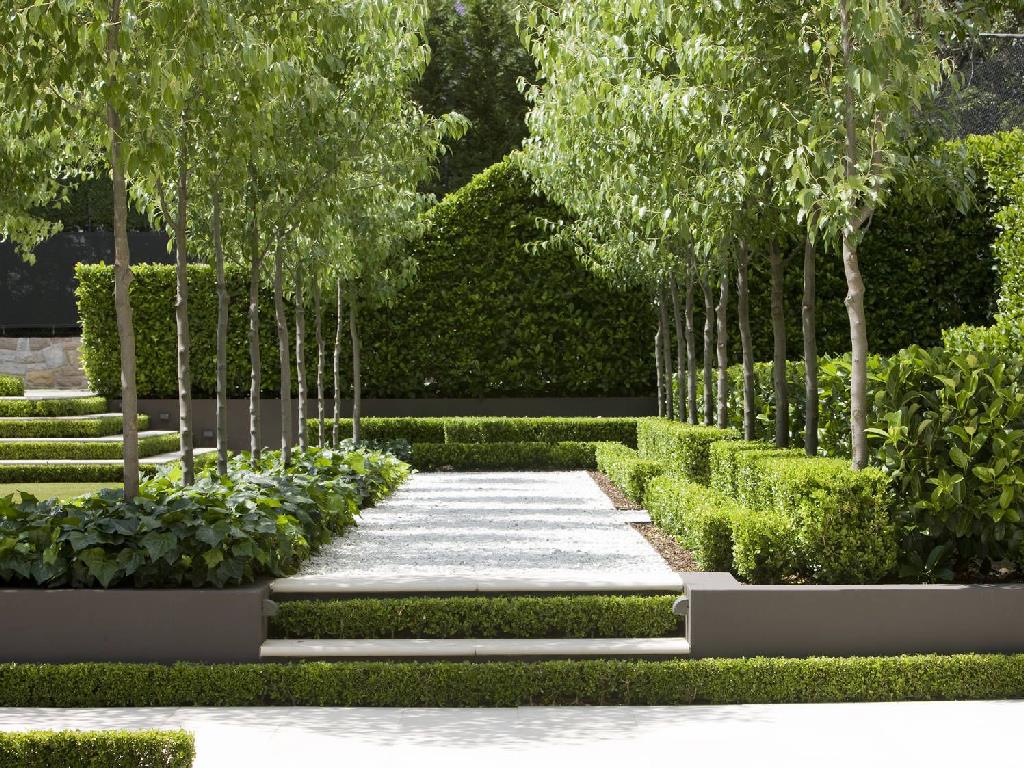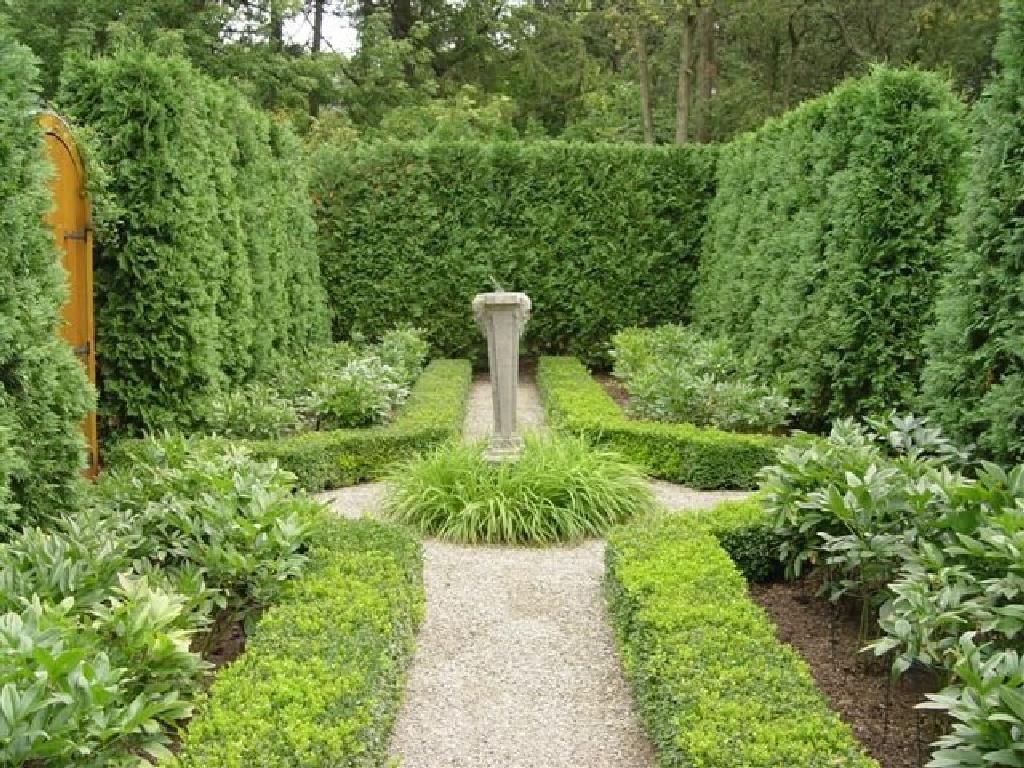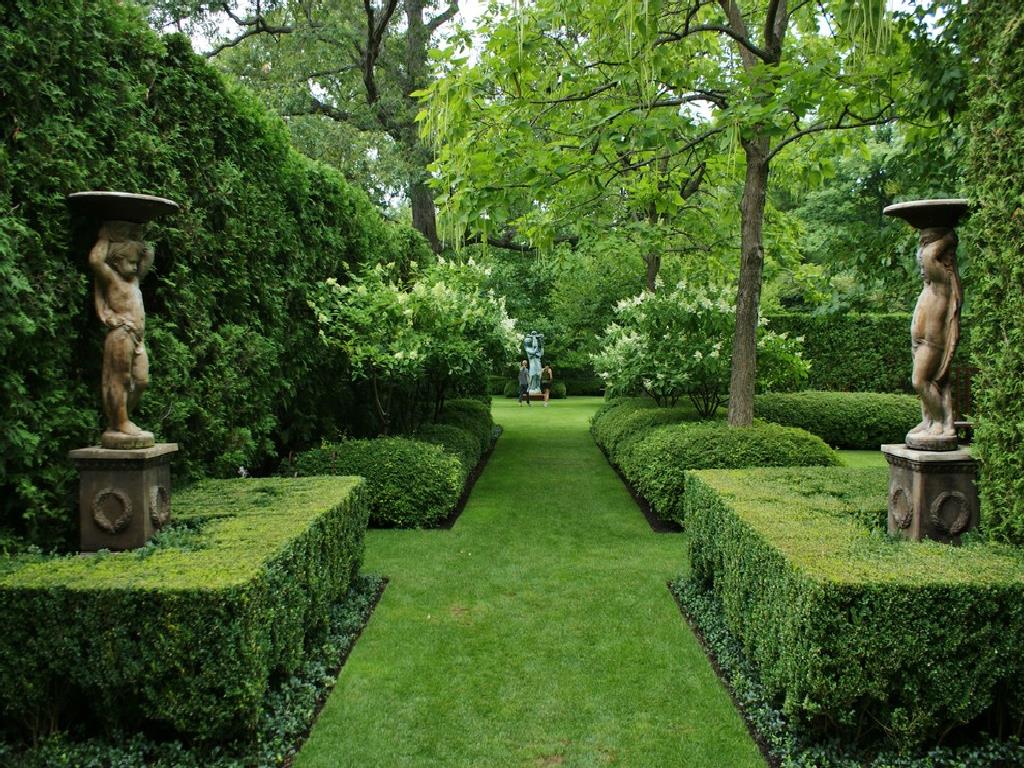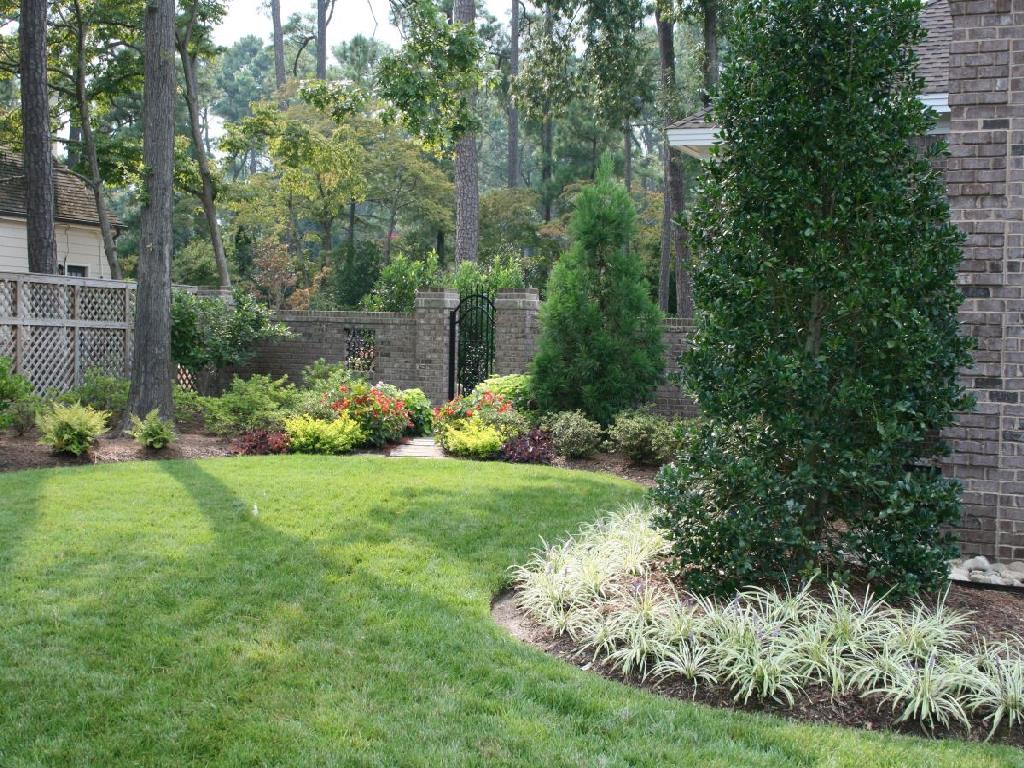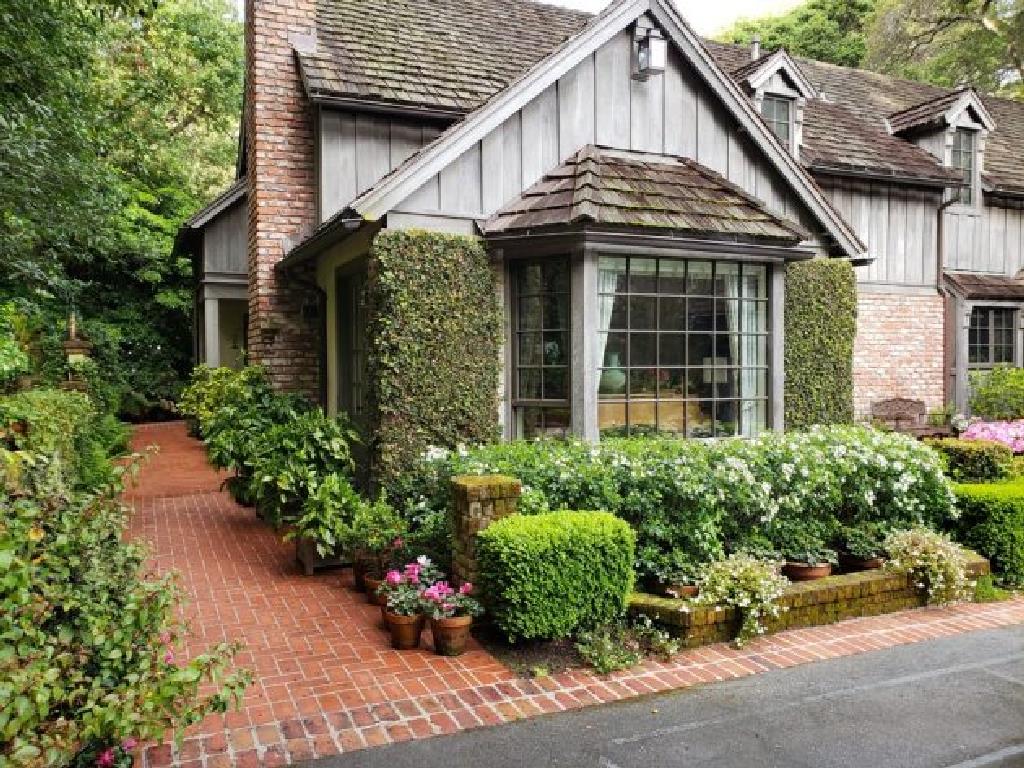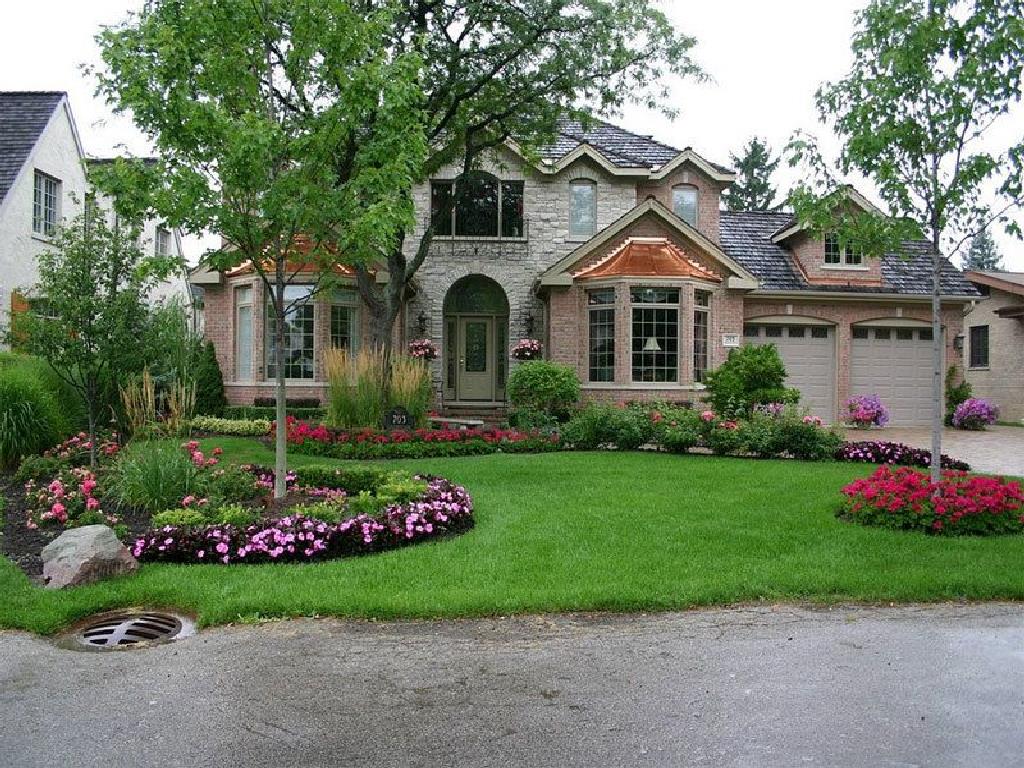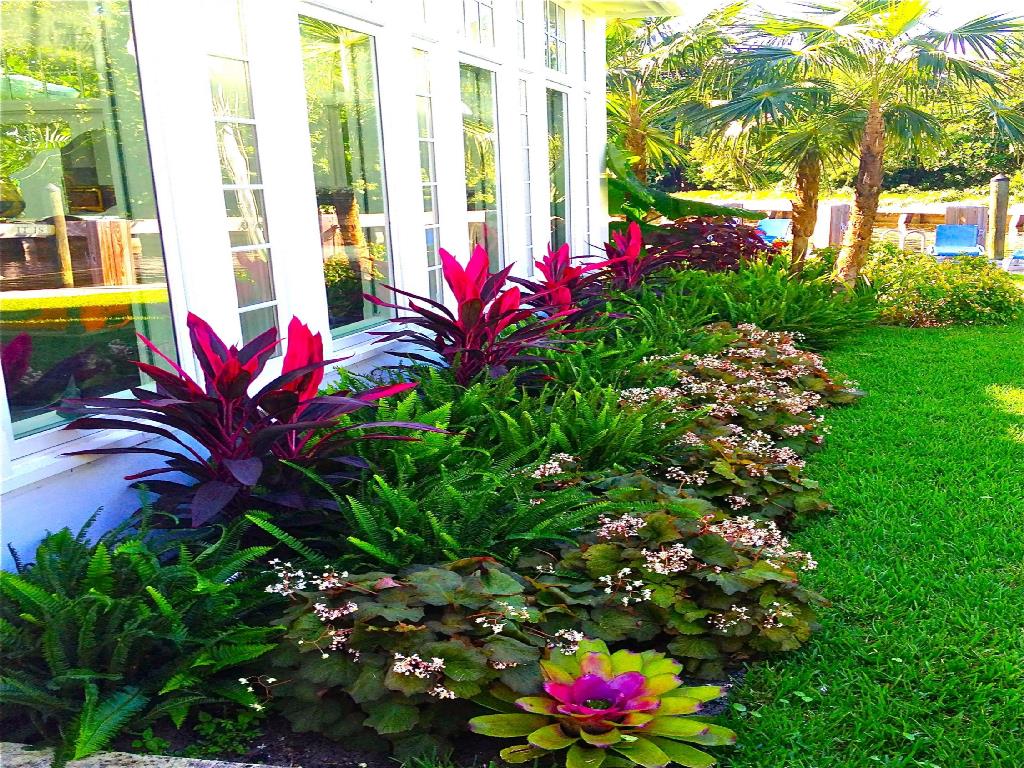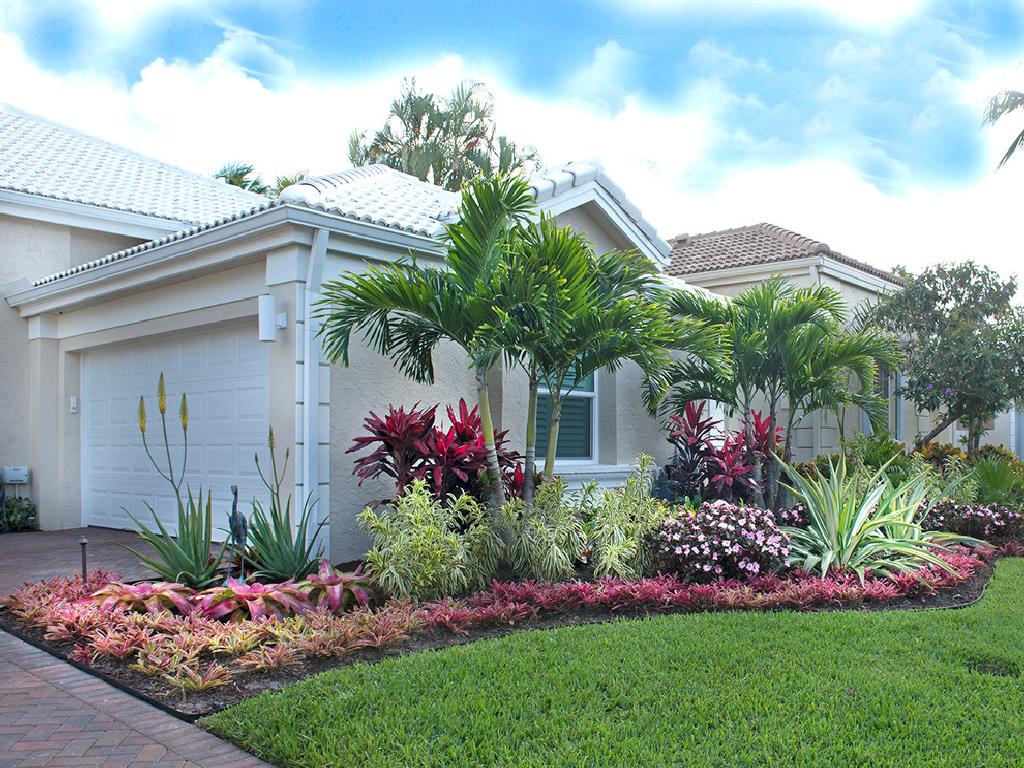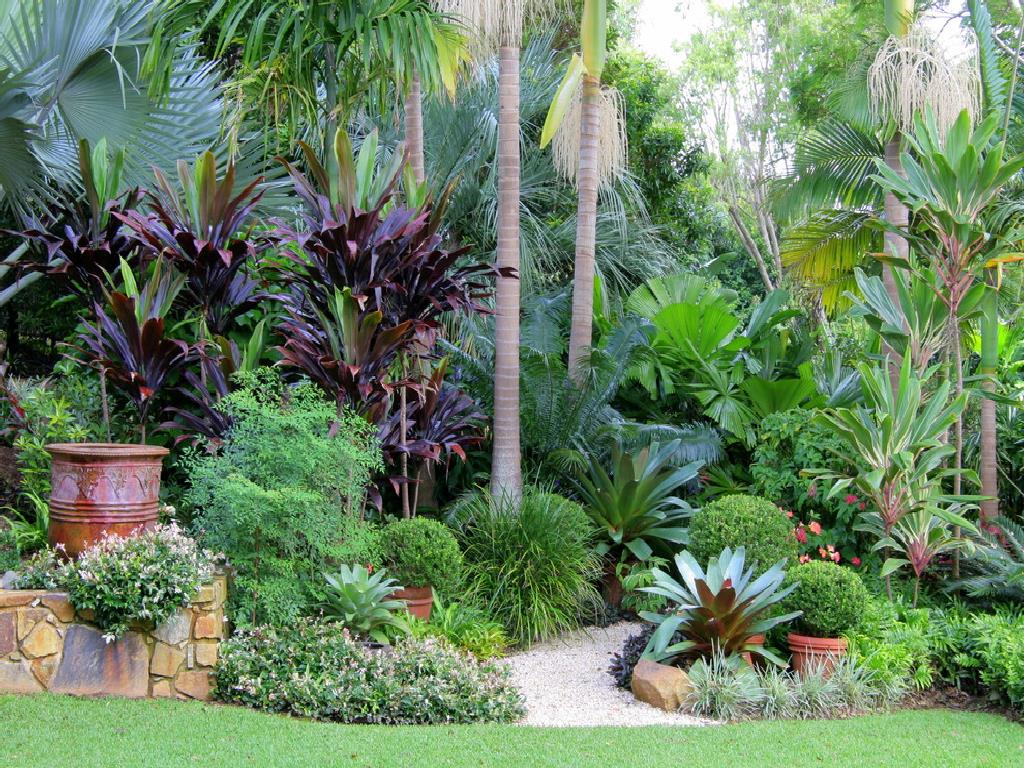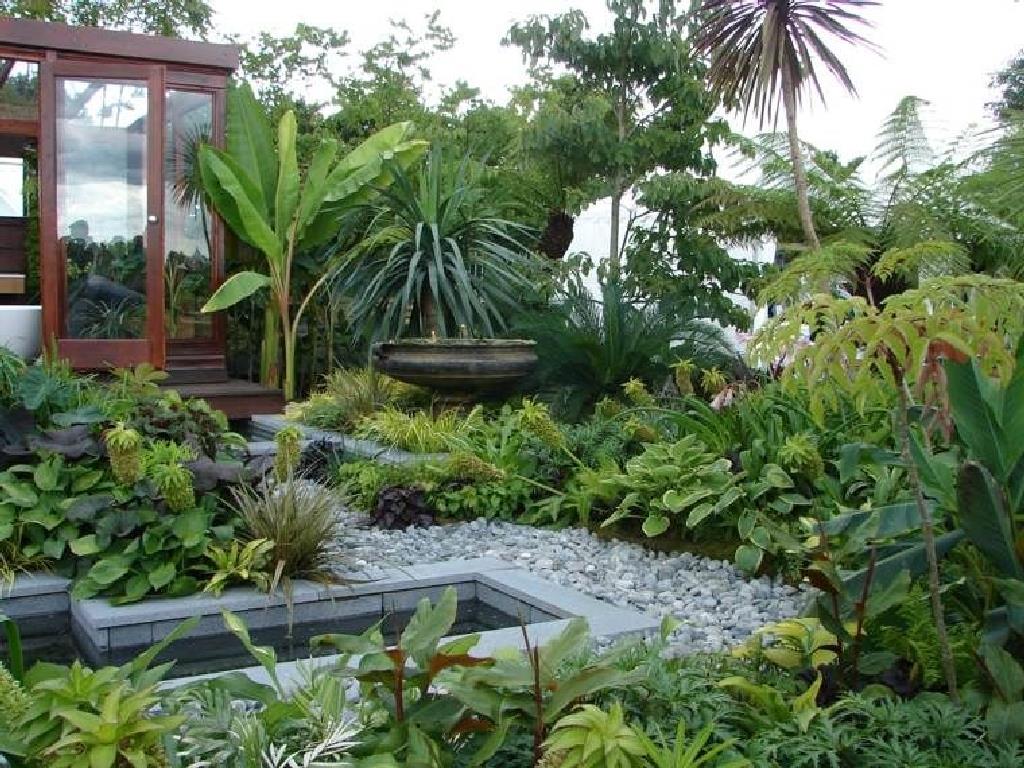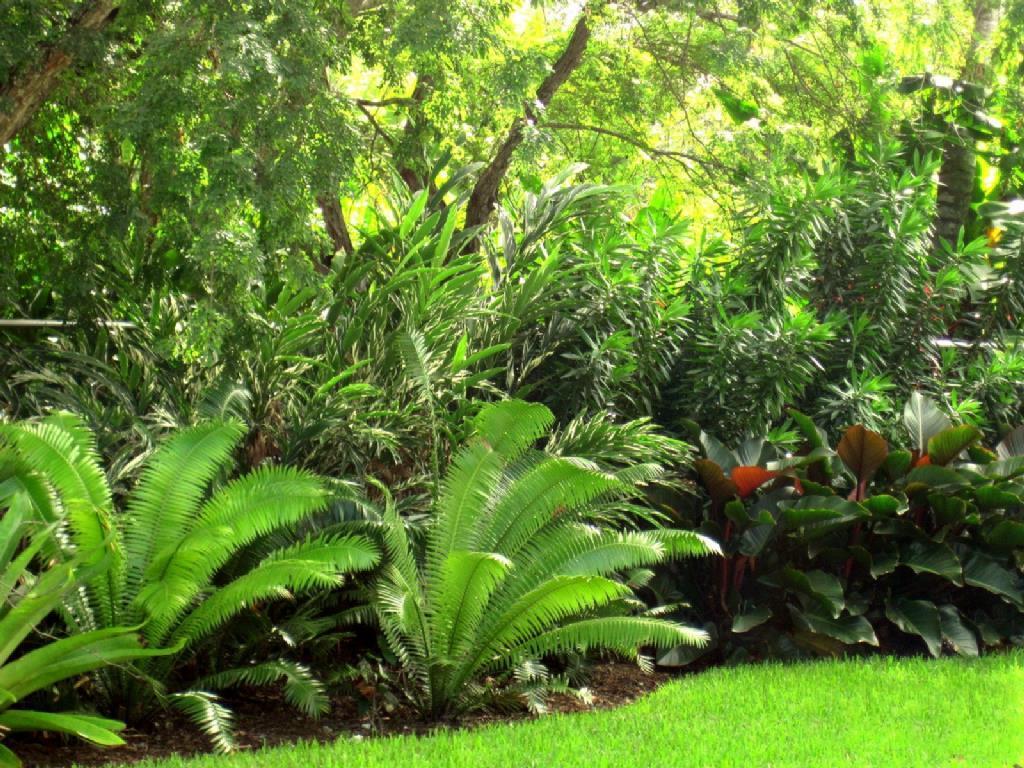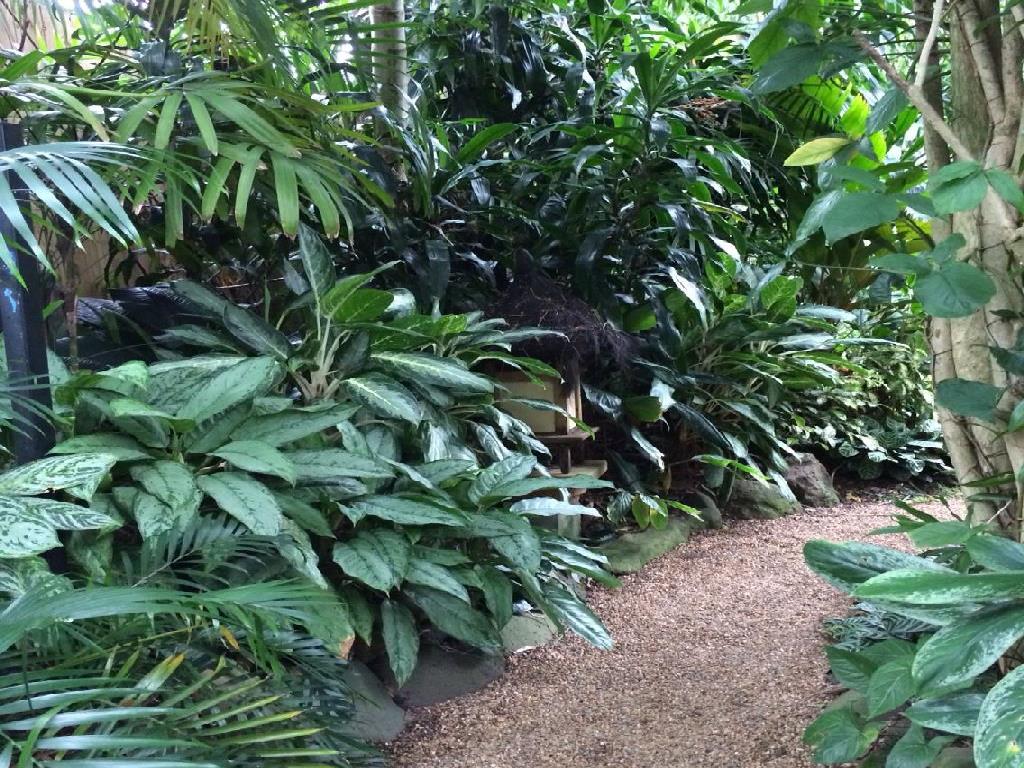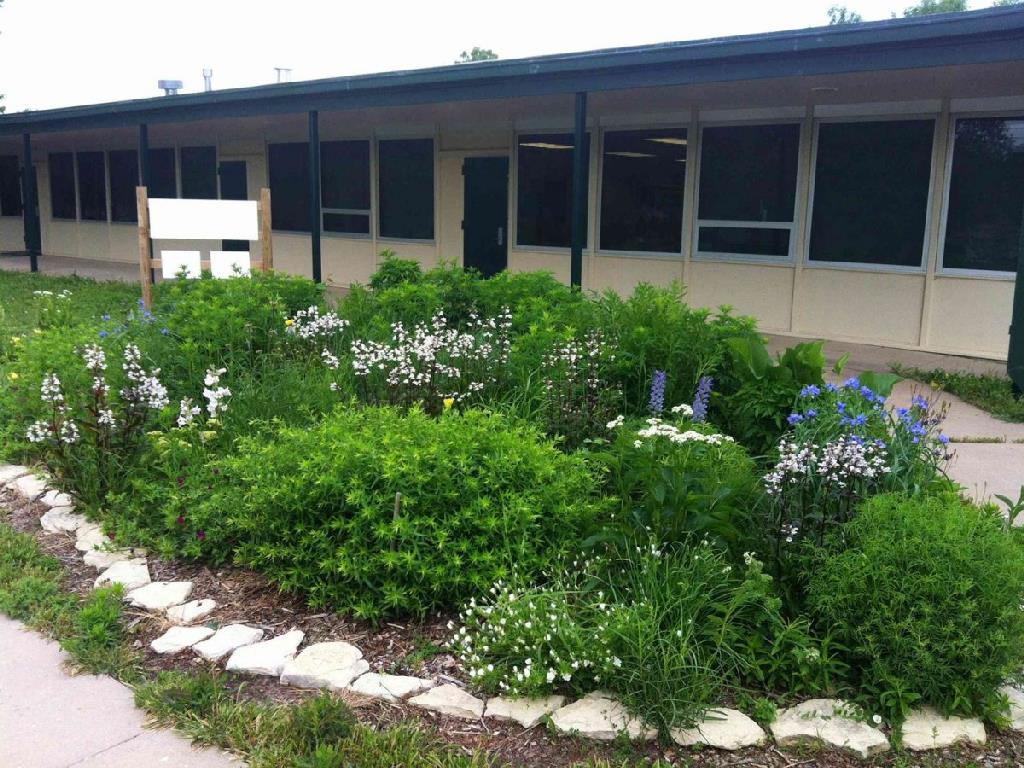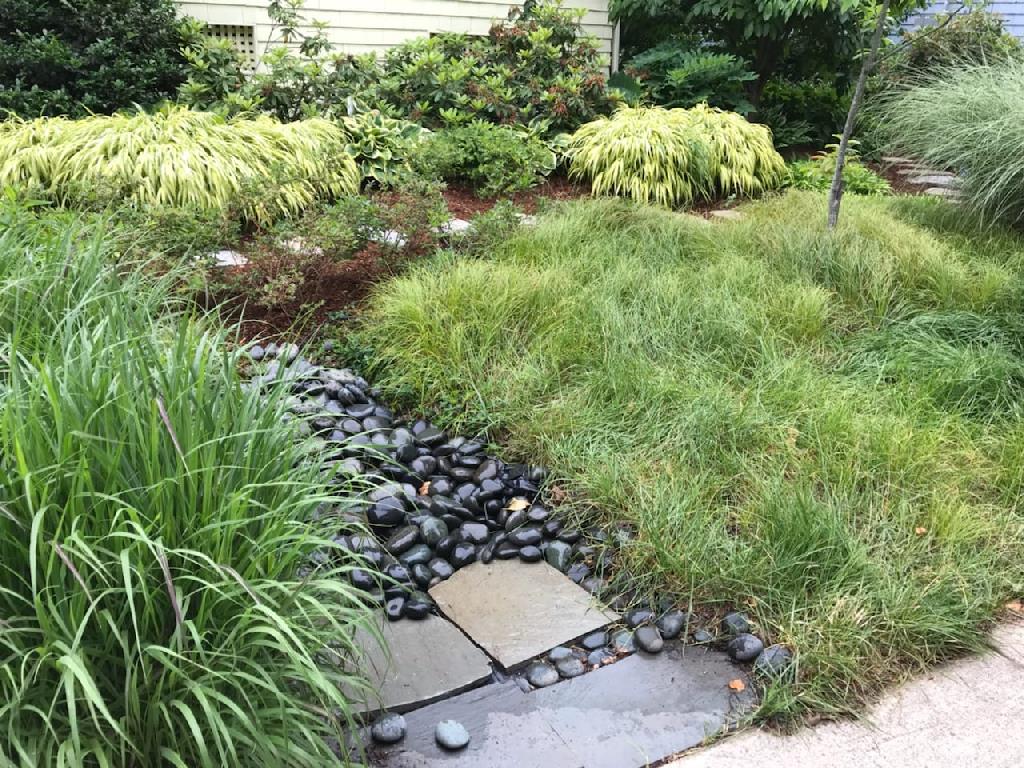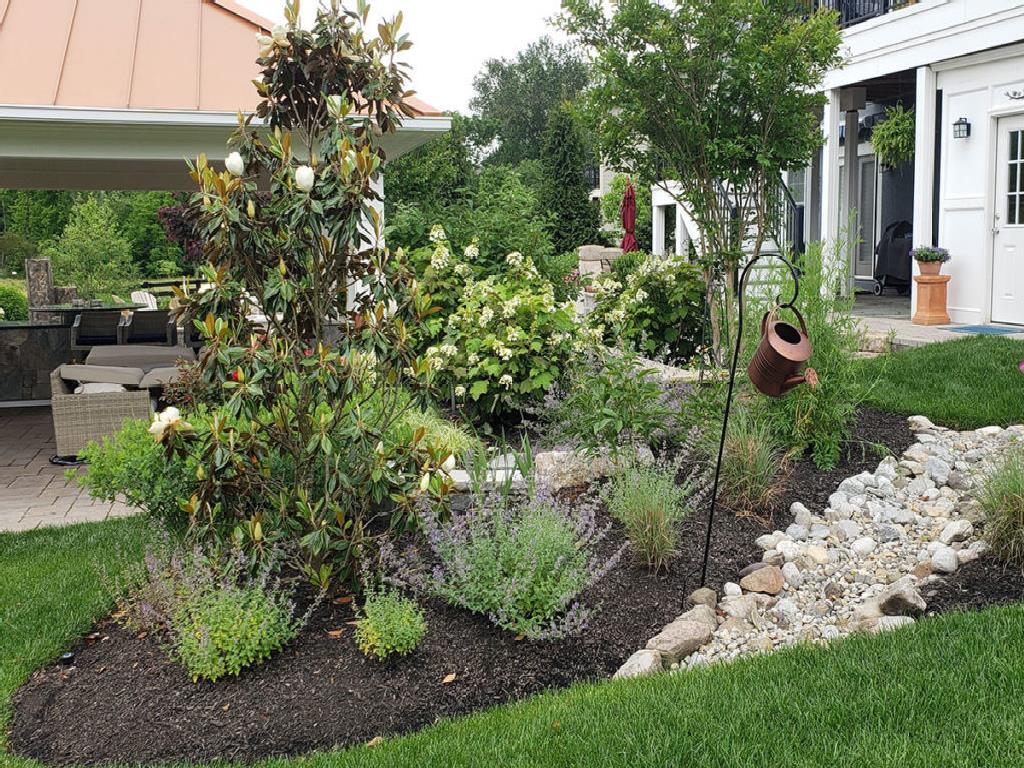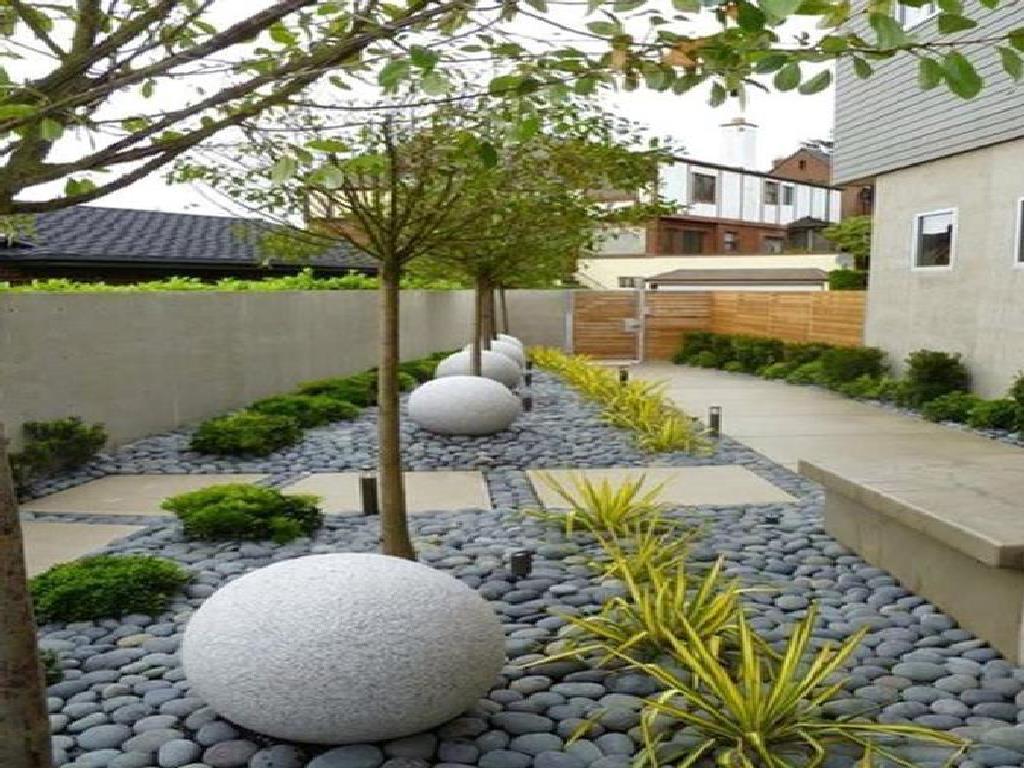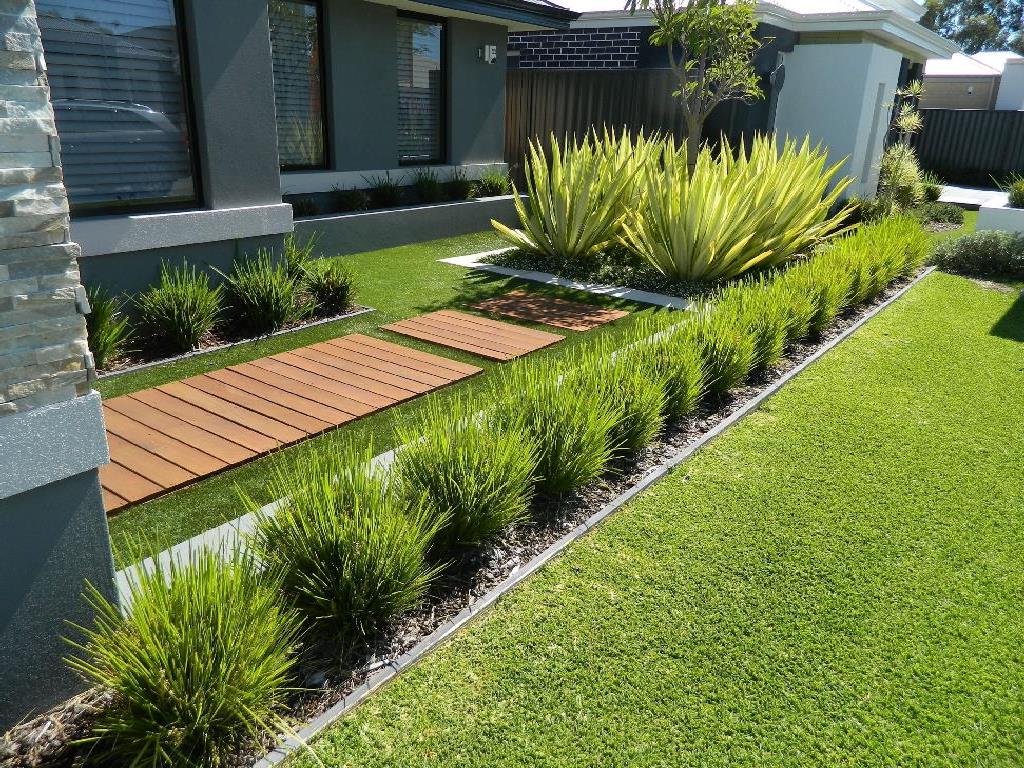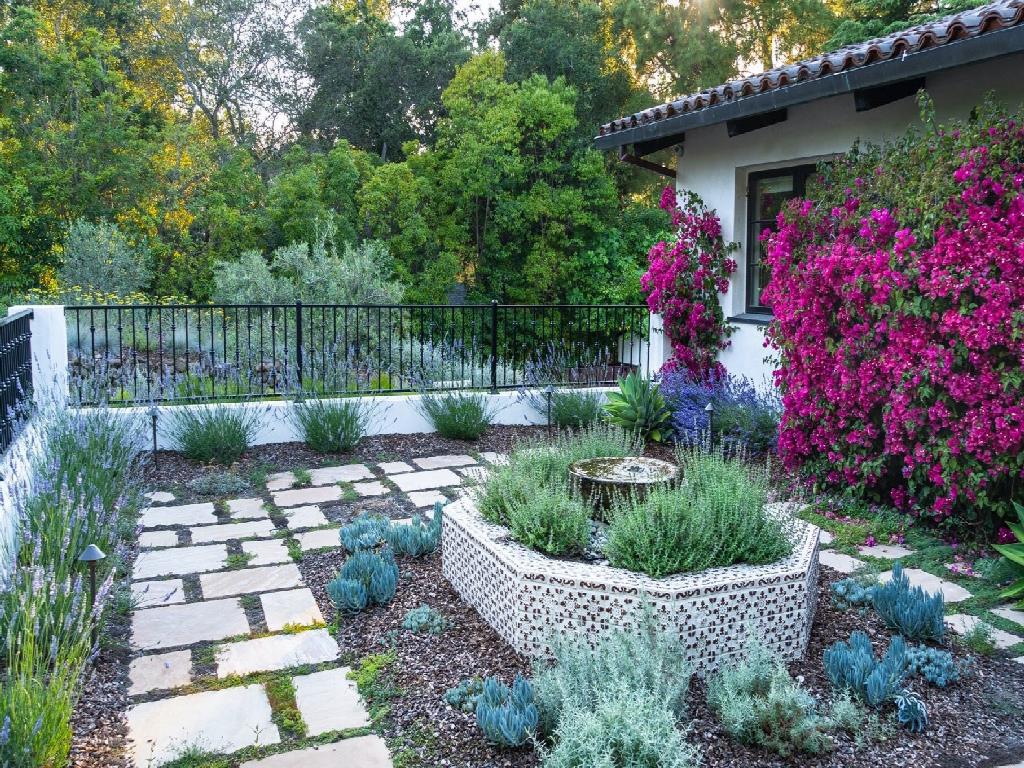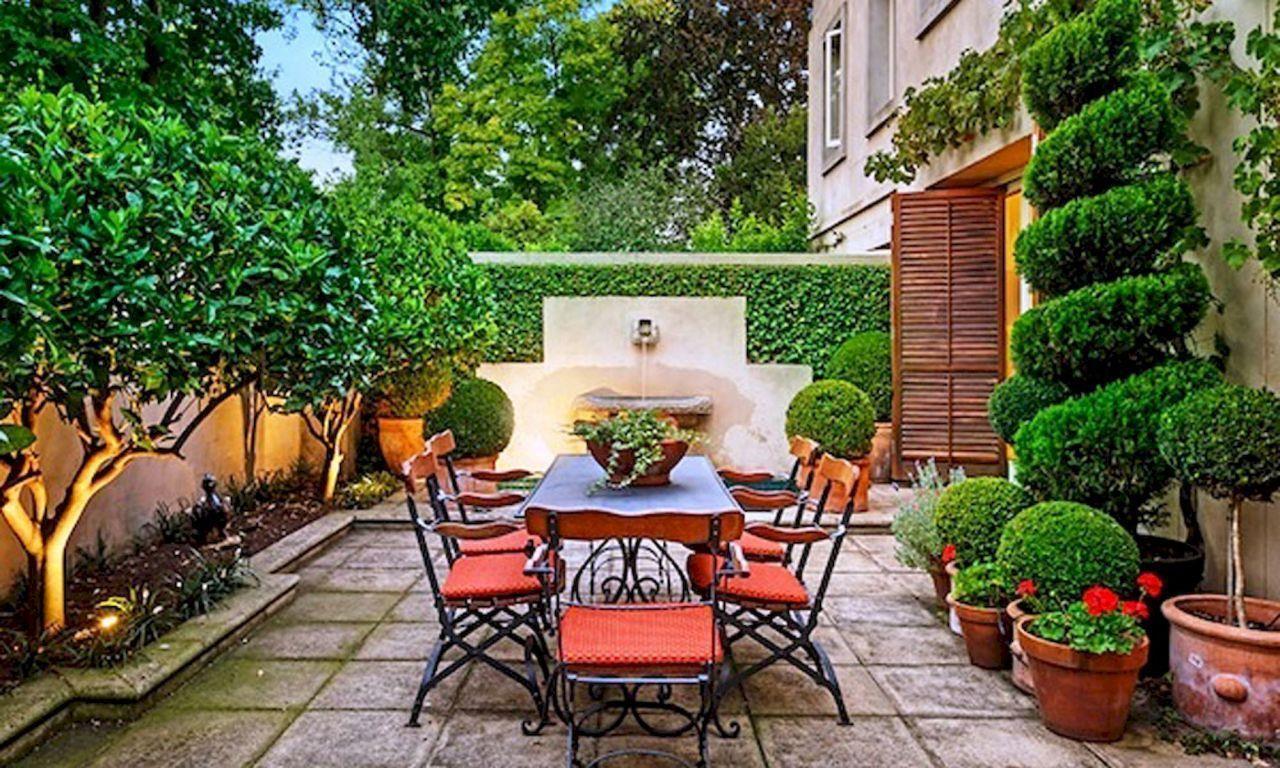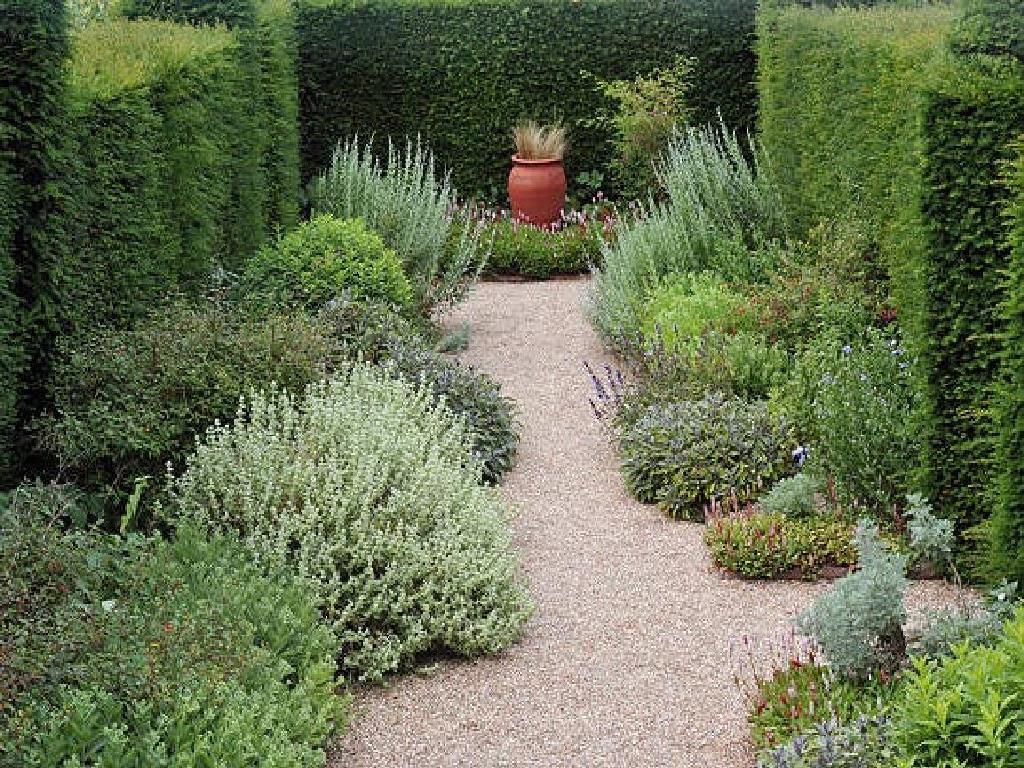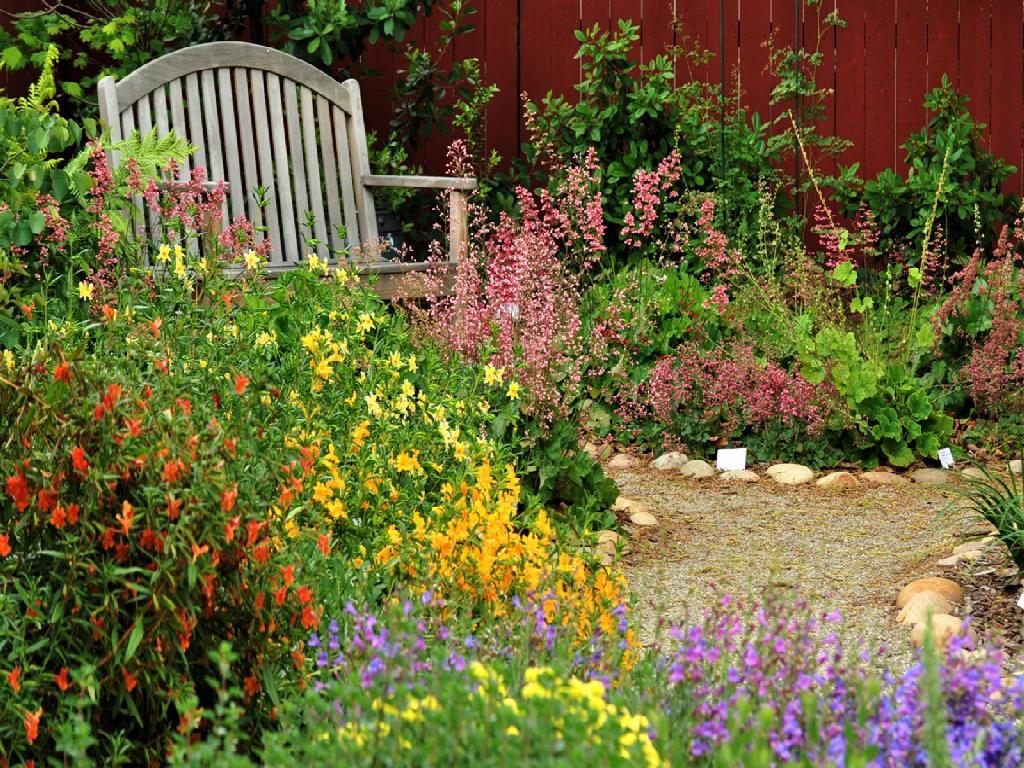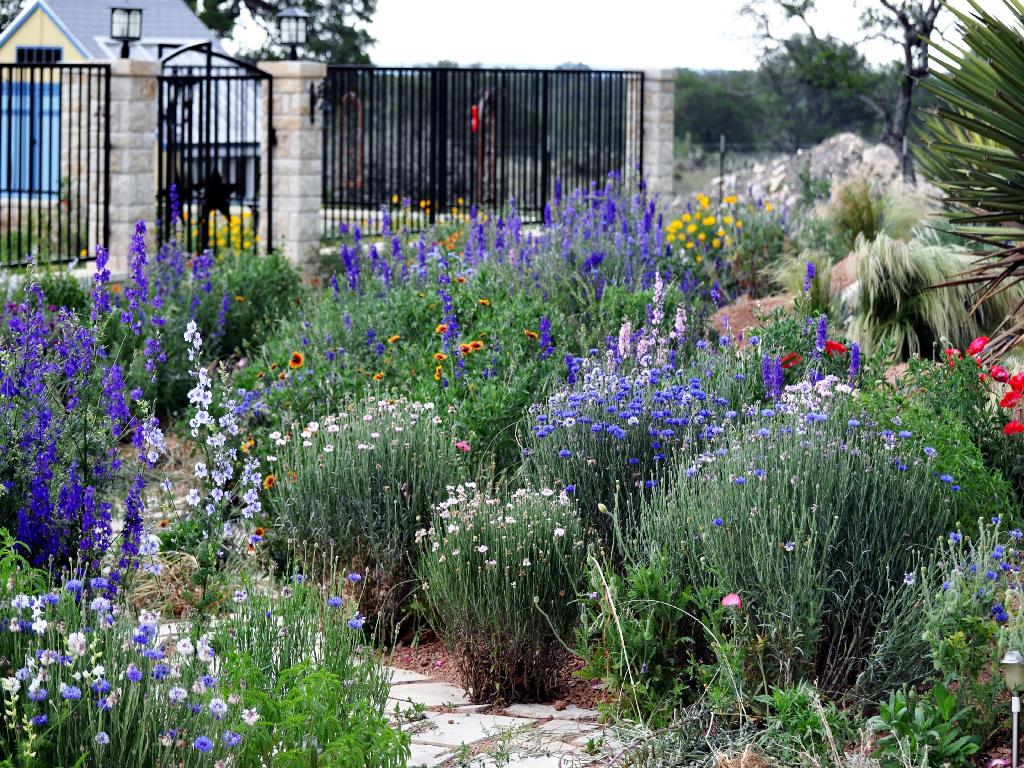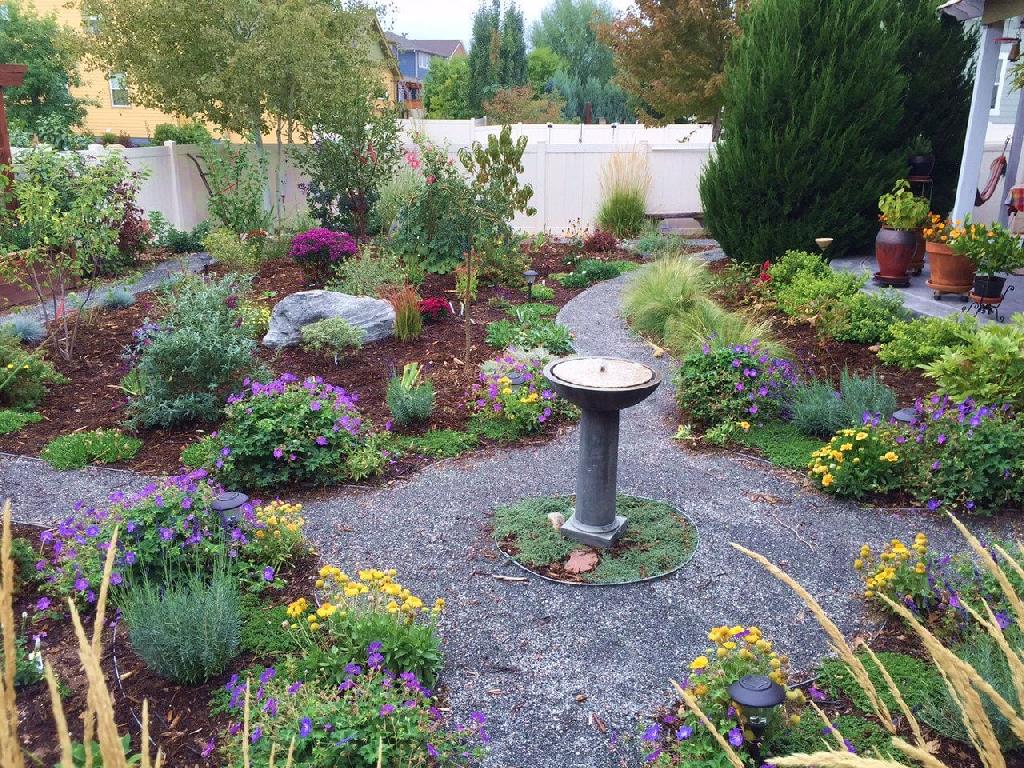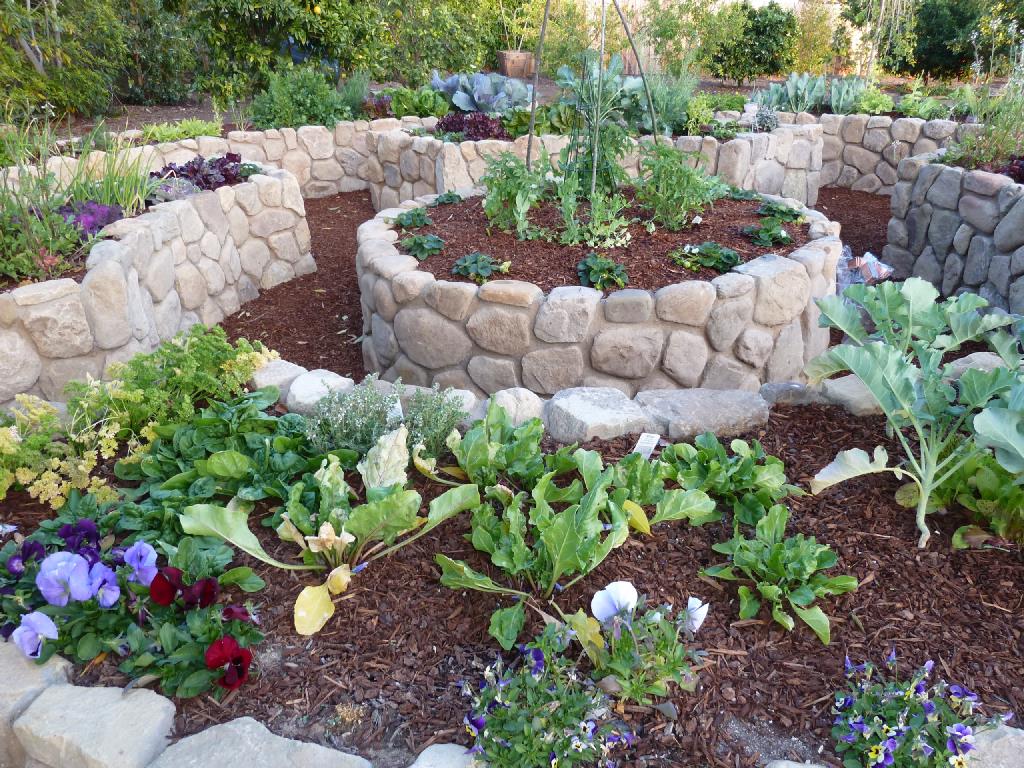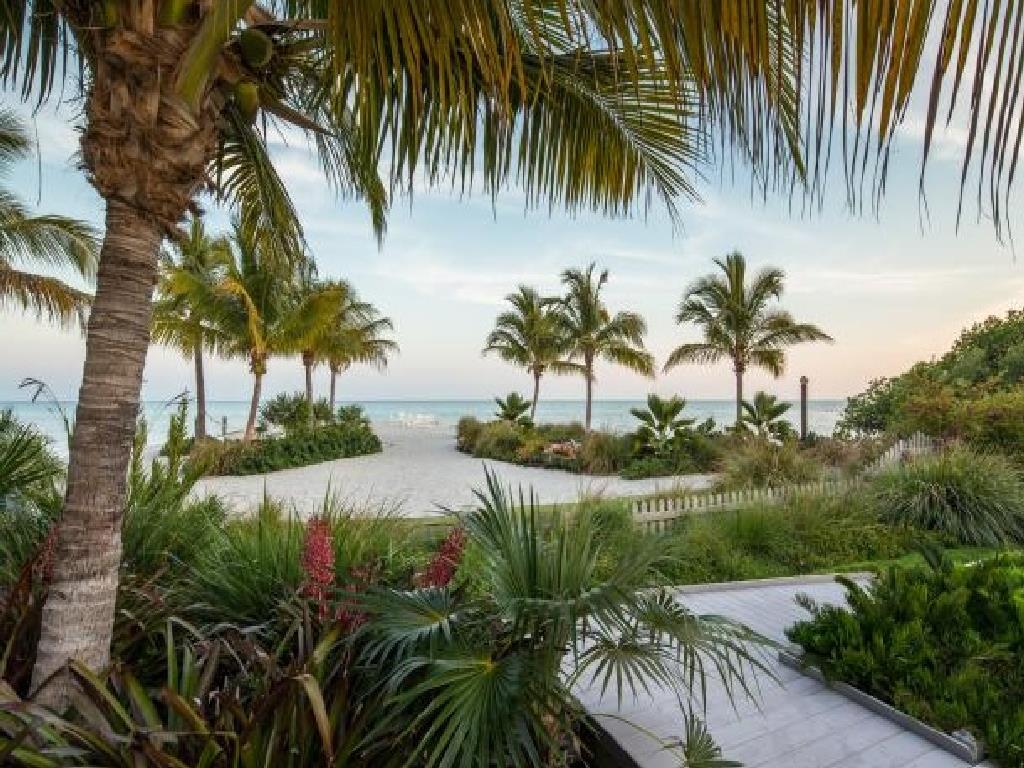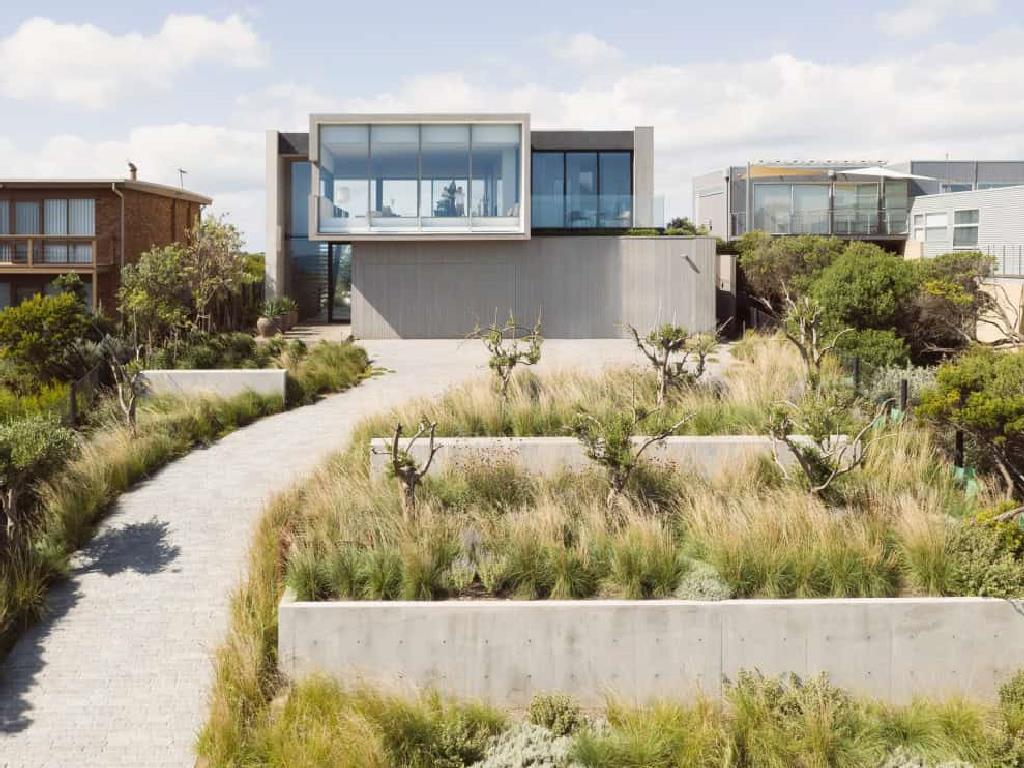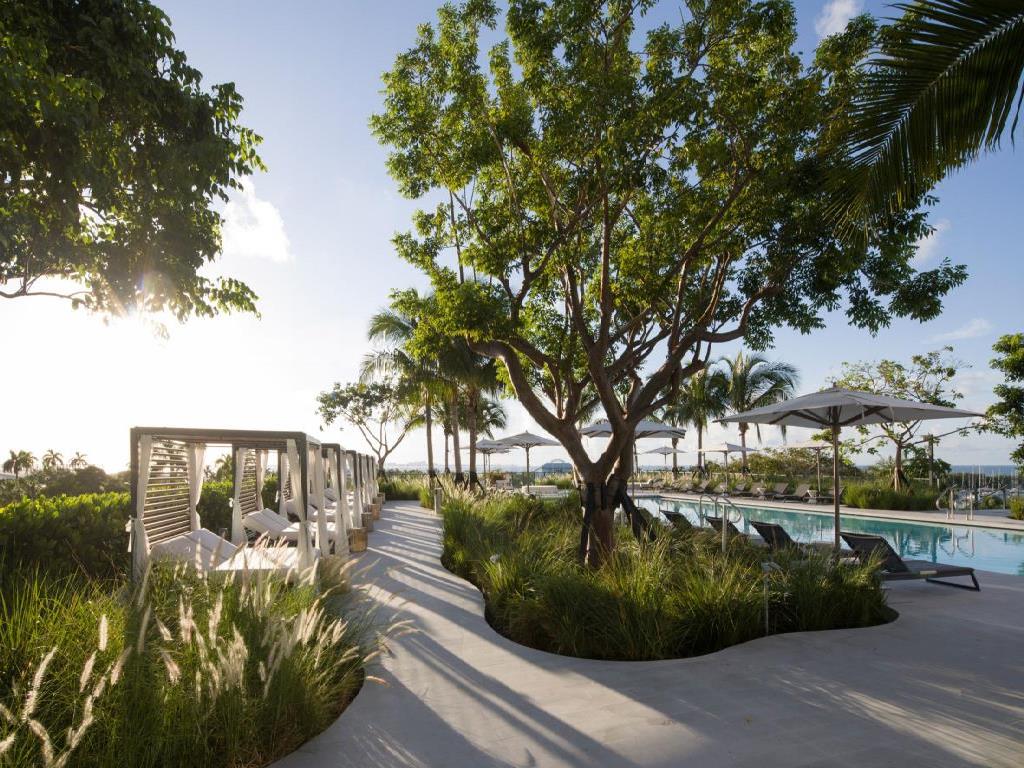The “Theme” of your customized Landscape Design includes several considerations, primary among them are the Layout of the Plants/Materials, and the specific Plant Species recommended for the Plant Pallet. The Theme selected should represent the new Landscape that you want in a General sense. There are 10 distinct Landscape Design Themes to choose from, for example:
“Formal” Theme
A Formal Landscape Design Theme presents a clean, orderly layout that relies heavily on Symmetry and Balance when locating Plants and Materials. Bed lines and Pathways are arranged in straight lines with right angles and Geometric Shapes often play a central role in this Design Theme. Often, a Formal Design Theme utilizes a dominant, central element in the arrangement – such as a striking Flowering Tree, a Fountain, a Sculpture, a Topiary, etc.
Formal Design Theme:
Supplemental Watering Requirements (after plant establishment period): Low to Medium (1x – 3x weekly)
Maintenance Requirements (Pruning, Trimming, Shaping): Very High to maintain Formal appearance (Minimum 1x monthly)
Sustainability Index: Typically High based on the utilization of mostly long-lived, evergreen Plant Species in the plant pallet
“Traditional” Theme
A Traditional Landscape Design Theme represents the most popular theme due to Aesthetics, Maintenance Requirements and Sustainability. Utilizing “tried-and-true” plant species that thrive in your Agriculture Growing Zone, the aim of this theme is to provide a professional, attractive landscape to any residence or business facility. Design Objectives are met through the use of Anchor Plants, Multi-Level Layout and harmonious Accent Plants. This theme is often utilized to highlight existing Architectural qualities of the structure or reinforce particular colors schemes.
Traditional Design Theme:
Supplemental Watering Requirements (after plant establishment period): Medium to High (2x – 5x weekly)
Maintenance Requirements (Pruning, Trimming, Shaping): Medium (2x – 7x year)
Sustainability Index: Low to Medium
“Tropical” Theme
A Tropical Landscape Design Theme presents a looser, fuller and more colorful landscape which typically includes striking accent plants, palms (if appropriate to your site’s Agricultural Zone), large-leafed plant species and a high percentage of flowering species. It’s important to note existing light and soil moisture conditions in a Tropical Design. Bed lines and Pathways can be arranged in flowing curves with palms, small trees and accent plants used to provide area transitions and/or dominant features.
Tropical Design Theme:
Supplemental Watering Requirements (after plant establishment period): Medium to High (2x – 4x weekly)
Maintenance Requirements (Pruning, Trimming, Shaping): Low to Medium (Dependent on desired appearance)
Sustainability Index: Average Rating – note that Annual Plantings may need frequent replacement (up to 3x year)
“Jungle” Theme
A Jungle Landscape Design Theme presents a full, dense landscape which typically includes large-leaf species, palms (if appropriate to your site’s Agricultural Zone), and little overt delineation between landscape areas. It’s important to note existing light and soil moisture conditions in a Jungle Design as many utilized species will require at minimum a part-time Shaded environment. Bed lines and Pathways are usually arranged in flowing curves with plant types utilized to create Canopy, Understory and Ground layers.
Jungle Design Theme:
Supplemental Watering Requirements (after plant establishment period): Medium to High (2x – 5x weekly)
Maintenance Requirements (Pruning, Trimming, Shaping): Low (regularly remove only dead or declining leaves and fronds)
Sustainability Index: Above Average Rating for plant longevity
“Sustainable” Theme
A Sustainable Landscape Design Theme presents an open layout that relies heavily on Native and Pest/Disease Resistant (Eco-friendly) species. Plants that require little-to-no supplemental watering play a major role in this design type and self-propagating species are often utilized with Succulent, Grasses and Bromeliad-type plants included. Rocks and Gravel are often used as Accents and for the Static Ground Cover.
Sustainable Design Theme:
Supplemental Watering Requirements (after plant establishment period): Low (1x week)
Maintenance Requirements (Pruning, Trimming, Shaping): Low (1x – 3x year)
Sustainability Index: Extremely High
“Minimalist” Theme
A Minimalist Landscape Design Theme presents the most open layout that relies on Specimen plantings with scattered Accents and limited Ground Cover areas. Plants that require little-to-no supplemental watering are central in this design with Boulders, Gravel and occasionally Sculpture or Garden Art used to provide a dominant element. Rocks and Gravel are typically used for the Static Ground Cover.
Minimalist Design Theme:
Supplemental Watering Requirements (after plant establishment period): Low (1x week average)
Maintenance Requirements (Pruning, Trimming, Shaping): Low (1x – 3x year)
Sustainability Index: Extremely High
“Mediterranean” Theme
A Mediterranean Landscape Design Theme combines elements of a Tropical theme with a touch of Formality. Characterized primarily by green, drought-tolerant plant species with splashes of color, a Mediterranean Design often includes the liberal use of Ornamental Containers and/or Planters to showcase interesting plant species. Evergreen species with occasional Topiary specimens can be utilized. The Mediterranean Theme highlights your outdoor spaces through the use of contrasting plant textures in a generally loose, open design.
Mediterranean Design Theme:
Supplemental Watering Requirements (after plant establishment period): Medium (1x – 3x week)
Maintenance Requirements (Pruning, Trimming, Shaping): Medium (2x – 5x year)
Sustainability Index: Medium/High
“Wildlife/Pollinator” Theme
A Wildlife/Pollinator Landscape Design Theme utilizes a plant pallet consisting primarily of species that will attract local wildlife and pollinator creatures including Butterflies, Moths, Bees and Hummingbirds. Blooming and Fruiting plant species will help bring your landscape area to life by attracting many beneficial and/or desirable insect and animal species. Increased Sustainability aspects include minimal to no requirements for Disease & Pest Control with extremely reduced maintenance activities necessary for the selected plant species. This theme incorporates aspects of a wild, loose and informal look. Note this design theme can be slightly unaesthetically appealing during certain times of year due to the fact that most pollinator insects lay their eggs on plant species that subsequently serve as the primary food source for larvae.
Wildlife/Pollinator Design Theme:
Supplemental Watering Requirements (after plant establishment period): Low (1x – 2x week)
Maintenance Requirements (Pruning, Trimming, Shaping): Low (1x – 3x year)
Sustainability Index: Very High
“Edible” Theme
An Edible Landscape Design focuses on shrubs, grasses, trees and ground covers that produce edible fruit, flowers/leaves or berries. Due to this fact it is important to pay special attention to product formulations when applying Disease & Pest Control measures and/or Fertilizers. Note that raised beds or containers for Vegetable and/or Herb growing can be utilized. For Balance and Aesthetics, not every plant species utilized in this theme will provide edible items.
Edible Design Theme:
Supplemental Watering Requirements (after plant establishment period): Medium (1x – 3x week)
Maintenance Requirements (Pruning, Trimming, Shaping): Medium (2x – 5x year)
Sustainability Index: Medium
“Beach” (Salt/High Alkaline Environment) Theme
A Beach Landscape Design Theme combines elements of a Sustainable and Tropical theme with an existing conditions-appropriate plant pallet. Characterized primarily by proven salt-tolerant/highly Alkaline soil plant species, a Beach Design often includes Palms and Flowering Ground Covers with occasional Hedging for wind and noise abatement. The Beach Theme also seeks to highlight the desirable Views the particular location may offer while utilizing plant species that will thrive long-term in the otherwise harsh conditions.
Beach Design Theme:
Supplemental Watering Requirements (after plant establishment period): Medium (1x – 3x week)
Maintenance Requirements (Pruning, Trimming, Shaping): Medium (2x – 5x year)
Sustainability Index: Medium/High

